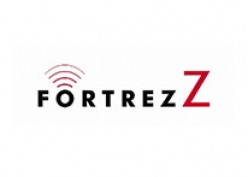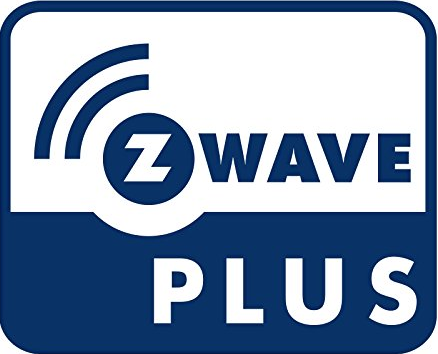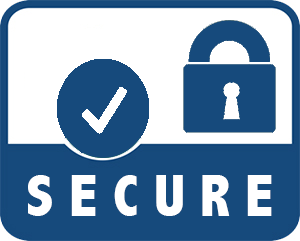
FortrezZ LLC
Flood & Temperature Sensor
SKU: FTS05P


Quickstart
This is a
1) Set up the Add/Inclusion mode at the controller; 2) Briefly press the switch once and the controller will indicate the unit has been added into the network.Also, the LED will blink 2 quick blinks when complete.
Important safety information
Please read this manual carefully. Failure to follow the recommendations in this manual may be dangerous or may violate the law. The manufacturer, importer, distributor and seller shall not be liable for any loss or damage resulting from failure to comply with the instructions in this manual or any other material. Use this equipment only for its intended purpose. Follow the disposal instructions. Do not dispose of electronic equipment or batteries in a fire or near open heat sources.What is Z-Wave?
Z-Wave is the international wireless protocol for communication in the Smart Home. This device is suited for use in the region mentioned in the Quickstart section.
Z-Wave ensures a reliable communication by reconfirming every message (two-way communication) and every mains powered node can act as a repeater for other nodes (meshed network) in case the receiver is not in direct wireless range of the transmitter.
This device and every other certified Z-Wave device can be used together with any other certified Z-Wave device regardless of brand and origin as long as both are suited for the same frequency range.
If a device supports secure communication it will communicate with other devices secure as long as this device provides the same or a higher level of security. Otherwise it will automatically turn into a lower level of security to maintain backward compatibility.
For more information about Z-Wave technology, devices, white papers etc. please refer to www.z-wave.info.
Product Description
Gain the peace of mind and the protection you expect. Water damages are caused by leaking pipes, corroded water heaters, water storage tanks, fixtures in bathrooms, laundry rooms, refrigerator drip pans etc. Place this sensor in areas near water consuming appliances and drains. If a leak occurs, water will puddle and wet the sensor, triggering an alarm. The Sensor will notify the Z-wave controller that a flood has been detected. Paired with our Water Valve, these units will automatically signal the water to shut-off, eliminating any further damage from occurring.
Prepare for Installation / Reset
Please read the user manual before installing the product.
In order to include (add) a Z-Wave device to a network it must be in factory default state. Please make sure to reset the device into factory default. You can do this by performing an Exclusion operation as described below in the manual. Every Z-Wave controller is able to perform this operation however it is recommended to use the primary controller of the previous network to make sure the very device is excluded properly from this network.
Reset to factory default
This device also allows to be reset without any involvement of a Z-Wave controller. This procedure should only be used when the primary controller is inoperable.
Reset the device to factory Defaults - Press and hold the program button for longer than 15 seconds.When complete, the LED will flash approx. 30 times.This can be done while the device is either in or out of a network. Please use this procedure only when the network primary controller is missing or otherwise inoperable. CautionWhen this is done in-network, the device will no longer be in the network and all configurations and associations will be set to default.
Inclusion/Exclusion
On factory default the device does not belong to any Z-Wave network. The device needs to be added to an existing wireless network to communicate with the devices of this network. This process is called Inclusion.
Devices can also be removed from a network. This process is called Exclusion. Both processes are initiated by the primary controller of the Z-Wave network. This controller is turned into exclusion respective inclusion mode. Inclusion and Exclusion is then performed doing a special manual action right on the device.
Inclusion
1) Set up the Add/Inclusion mode at the controller; 2) Briefly press the switch once and the controller will indicate the unit has been added into the network.Also, the LED will blink 2 quick blinks when complete.Exclusion
1) Set up the Remove/Exclusion mode at the controller; 2) Press and hold the switch for approx. 2 seconds and then release.The controller will indicates the unit has been removed from the network.The LED will blink 4 quick blinks when complete.Communication to a Sleeping device (Wakeup)
This device is battery operated and turned into deep sleep state most of the time to save battery life time. Communication with the device is limited. In order to communicate with the device, a static controller C is needed in the network. This controller will maintain a mailbox for the battery operated devices and store commands that can not be received during deep sleep state. Without such a controller, communication may become impossible and/or the battery life time is significantly decreased.
This device will wakeup regularly and announce the wakeup state by sending out a so called Wakeup Notification. The controller can then empty the mailbox. Therefore, the device needs to be configured with the desired wakeup interval and the node ID of the controller. If the device was included by a static controller this controller will usually perform all necessary configurations. The wakeup interval is a tradeoff between maximal battery life time and the desired responses of the device. To wakeup the device please perform the following action: To initiate manual wakeup, press the program button once, while in network.Device stays awake for 10 seconds or longer if communicating with the controller.
Quick trouble shooting
Here are a few hints for network installation if things dont work as expected.
- Make sure a device is in factory reset state before including. In doubt exclude before include.
- If inclusion still fails, check if both devices use the same frequency.
- Remove all dead devices from associations. Otherwise you will see severe delays.
- Never use sleeping battery devices without a central controller.
- Dont poll FLIRS devices.
- Make sure to have enough mains powered device to benefit from the meshing
Association - one device controls an other device
Z-Wave devices control other Z-Wave devices. The relationship between one device controlling another device is called association. In order to control a different device, the controlling device needs to maintain a list of devices that will receive controlling commands. These lists are called association groups and they are always related to certain events (e.g. button pressed, sensor triggers, ...). In case the event happens all devices stored in the respective association group will receive the same wireless command wireless command, typically a 'Basic Set' Command.
Association Groups:
| Group Number | Maximum Nodes | Description |
|---|---|---|
| 1 | 2 | Z-Wave Plus LifelineDevice Reset Locally (via 3 quick presses of the program switch)Battery Report (when calculated battery life percentage changes)NotificationsoWater (Type 5; Event Waterleak_Detected)oHeat (Type 4; Event Underheat_Detected)oHeat (Type 4; Event Underheat_Detected)Power (Type 8; Events Power_Applied, Replace_Soon, Replace_Now) |
| 2 | 2 | Basic Set Command ON (default, 0xFF) or OFF (0x00)is sent to the associated nodes to indicate that a Water Alarm is active.This depends on the parameter 4 configuration value.When the water alarm is cleared, one additional report with the opposite value is sent. |
| 3 | 2 | Basic Set Command with value = 0xFF is sent to the associated nodes to indicate that a Temperature High condition has been detected.When the temperature is back in the normal range, one additional report with value = 0x00 is sent. |
| 4 | 2 | Basic Set Command with value = 0xFF is sent to the associated nodes to indicate that a Temperature Low condition has been detected.When the temperature is back in the normal range, one additional report with value = 0x00 is sent. |
| 5 | 2 | Temperature report (Multilevel Sensor) when the temperature has changed (with filtering/hysteresis to avoid continuous transmissions at a transition point). |
| 6 | 2 | Temperature report (Multilevel Sensor) every 5 minutes |
| 7 | 2 | Temperature report (Multilevel Sensor) every 20 minutes |
| 8 | 2 | Temperature report (Multilevel Sensor) every 60 minutes |
Configuration Parameters
Z-Wave products are supposed to work out of the box after inclusion, however certain configuration can adapt the function better to user needs or unlock further enhanced features.
IMPORTANT: Controllers may only allow configuring signed values. In order to set values in the range 128 ... 255 the value sent in the application shall be the desired value minus 256. For example: To set a parameter to 200 it may be needed to set a value of 200 minus 256 = minus 56. In case of a two byte value the same logic applies: Values greater than 32768 may needed to be given as negative values too.
Parameter 1: Temperature Low threshold
Use this to change the low temperature alarm threshold. Set the range between -10 and 69 deg C Size: 1 Byte, Default Value: 4
| Setting | Description |
|---|---|
| 246 - 69 | -10 deg to 69 deg C |
Parameter 2: Temperature High threshold
Use this to change the high temperature alarm threshold. Set the range between -9 and 70 deg C Size: 1 Byte, Default Value: 70
| Setting | Description |
|---|---|
| 247 - 70 | -9 deg to 70 deg C |
Parameter 3: Normally Wet vs Normally Dry
Default is set as a Normally DRY sensor.Use this to switch to Normally WET sensor. Size: 1 Byte, Default Value: 0
| Setting | Description |
|---|---|
| 0 - 240 | 0 or 240 |
Parameter 4: Water Alarm Association Mode
Use this to send basic set ON or Basic Set OFF when an alarm is detected. '240' is basic Set ON (default).Use value of '0' for sending basic set OFF when alarm detected. Size: 1 Byte, Default Value: 240
| Setting | Description |
|---|---|
| 240 - 0 | 240 or 0 |
Technical Data
| Hardware Platform | ZM5202 |
| Device Type | Notification Sensor |
| Network Operation | Reporting Sleeping Slave |
| Firmware Version | HW: 5 FW: 2.10 |
| Z-Wave Version | 6.51.09 |
| Certification ID | ZC10-17065641 |
| Z-Wave Product Id | 0x0084.0x00A3.0x020A |
| Supported Notification Types | Heat AlarmPower ManagementSystemWater Alarm |
| Color | Black |
| Sensors | Air TemperatureFreezeHumidityMoistureSoil TemperatureWater Temperature |
| Firmware Updatable | Updatable by Consumer by RF |
| Frequency | XXfrequency |
| Maximum transmission power | XXantenna |
Supported Command Classes
- Association Grp Info
- Association V2
- Battery
- Configuration
- Device Reset Locally
- Firmware Update Md V2
- Manufacturer Specific V2
- Notification V4
- Powerlevel
- Security
- Sensor Multilevel V9
- Version V2
- Wake Up V2
- Zwaveplus Info V2
Controlled Command Classes
- Basic
Explanation of Z-Wave specific terms
- Controller — is a Z-Wave device with capabilities to manage the network. Controllers are typically Gateways,Remote Controls or battery operated wall controllers.
- Slave — is a Z-Wave device without capabilities to manage the network. Slaves can be sensors, actuators and even remote controls.
- Primary Controller — is the central organizer of the network. It must be a controller. There can be only one primary controller in a Z-Wave network.
- Inclusion — is the process of adding new Z-Wave devices into a network.
- Exclusion — is the process of removing Z-Wave devices from the network.
- Association — is a control relationship between a controlling device and a controlled device.
- Wakeup Notification — is a special wireless message issued by a Z-Wave device to announces that is able to communicate.
- Node Information Frame — is a special wireless message issued by a Z-Wave device to announce its capabilities and functions.